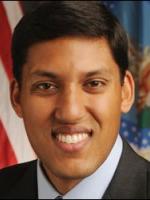
Leadership Matters

The new administrator of the long-rudderless U.S. Agency for International Development is a real-time case study of how leadership matters. Rajiv Shah, 36, stepped into the job just five days before the devastating earthquake shattered Haiti. According to the Washington Post, Shah suddenly found himself designated the "unified disaster coordinator" and in meetings with the President in the Situation Room in the basement of the White House. He’s been getting rave reviews for his quick response, especially without any time for a learning curve.
In Shah’s case, being in the right place at the right time was fortuitous. A recent report by the Partnership on Public Service on President Obama’s transition, one year into his administration, cited Secretary of State Hillary Clinton in July 2009 saying she was vexed by the long-standing USAID vacancy, “The clearance and vetting process is a nightmare. . . It is frustrating beyond words.”
The Washington Post’s “Head Count” database, which tracks the top 516 political positions, notes that over 40 percent of these positions are still vacant. This includes critical positions such as the head of the Transportation Security Agency, which had to respond to the Christmas terror attempt, and the head of the General Services Administration, which received a 1,100 percent budget increase this past year as part of the stimulus bill.
The Partnership report concludes that the appointment clearance, vetting, and confirmation processes have been “intractable problems for a long time, and altering the status quo will mean a new mindset and strong leadership in the Senate, and cooperation from the president.” The contrast between the leadership vacuum at GSA and the rapid response of USAID in Haiti show that an operational appointment process does matter.



